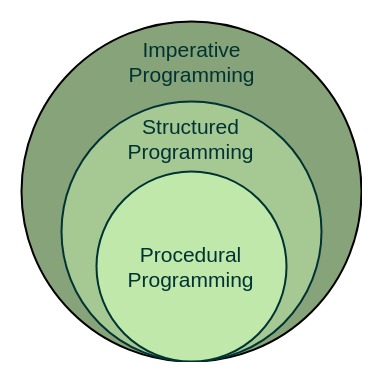Programming Paradigms and Blocks of Code
 Alok Gupta
Alok Gupta
Programming Paradigms: Programming paradigms are fundamental styles or approaches to programming based on distinct concepts and methodologies. They guide how programmers structure and write their code, influencing everything from syntax to design principles. Here are some common programming paradigms:
Procedural Programming:
Focuses on a sequence of computational steps to be executed.
Uses procedures or routines (functions) to operate on data.
Examples: C, Pascal.
Object-Oriented Programming (OOP):
Organizes code into objects that combine data and methods.
Emphasizes encapsulation, inheritance, and polymorphism.
Examples: C++, Java, Python.
Functional Programming:
Treats computation as the evaluation of mathematical functions.
Avoids changing state and mutable data.
Examples: Haskell, Lisp.
Event-Driven Programming:
The flow of the program is determined by events like user actions, sensor outputs, or messages.
Examples: JavaScript, ActionScript.
Logic Programming:
Uses logic and declarations to express computations.
Based on formal logic.
Examples: Prolog.
Block of Code: A block of code is a group of statements that are executed together as a single unit. In many programming languages, blocks of code are defined by curly braces {} or indentation. Blocks are used in defining the bodies of functions, loops, conditionals, and other constructs, helping organize and structure code logically and readably.
Development of C++ and Java
Bjarne Stroustrup and C++: Bjarne Stroustrup developed C++ in 1979 while working at Bell Labs. He aimed to enhance the C programming language with features that support object-oriented programming. Stroustrup was influenced by Simula, the first object-oriented language, and combined its features with the procedural aspects of C. The resulting language, C++, incorporated classes, inheritance, and polymorphism, making it suitable for both low-level system programming and high-level application development.
Key Features of C++:
Procedural Programming: Inherited from C, allowing detailed control over system resources.
Object-Oriented Programming: Introduced classes, objects, and other OOP principles.
Flexibility and Performance: Balanced high-level abstractions with low-level control, making it versatile for various applications.
Introduction of Java: In the early 1990s, the rise of the internet created a demand for platform-independent software. James Gosling and his team at Sun Microsystems, Inc., a California-based company, were initially working on a project for interactive television. They encountered limitations with C++ due to its platform dependency. This challenge led them to develop a new programming language that could run on any platform without requiring modifications.
Conclusion
The evolution of programming languages reflects the changing needs and technological advancements over the decades. Bjarne Stroustrup's development of C++ combined procedural and object-oriented programming, providing a versatile tool for software development. The advent of Java, driven by the rise of the internet and the need for platform-independent applications, revolutionized how programs are written and deployed. Understanding these paradigms and historical developments highlights the dynamic nature of software development and the continuous drive for innovation and efficiency in programming.
Subscribe to my newsletter
Read articles from Alok Gupta directly inside your inbox. Subscribe to the newsletter, and don't miss out.
Written by

Alok Gupta
Alok Gupta
I’m an aspiring web developer keen on learning new things. I’m dedicated to keeping up to date with the latest stuffs in web development. I always lookout for chances to grow and learn. When I’m not coding, I enjoy reading about India’s fascinating history. It helps satisfy my curiosity and teaches me about the diverse India.